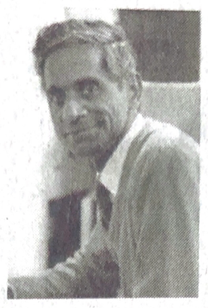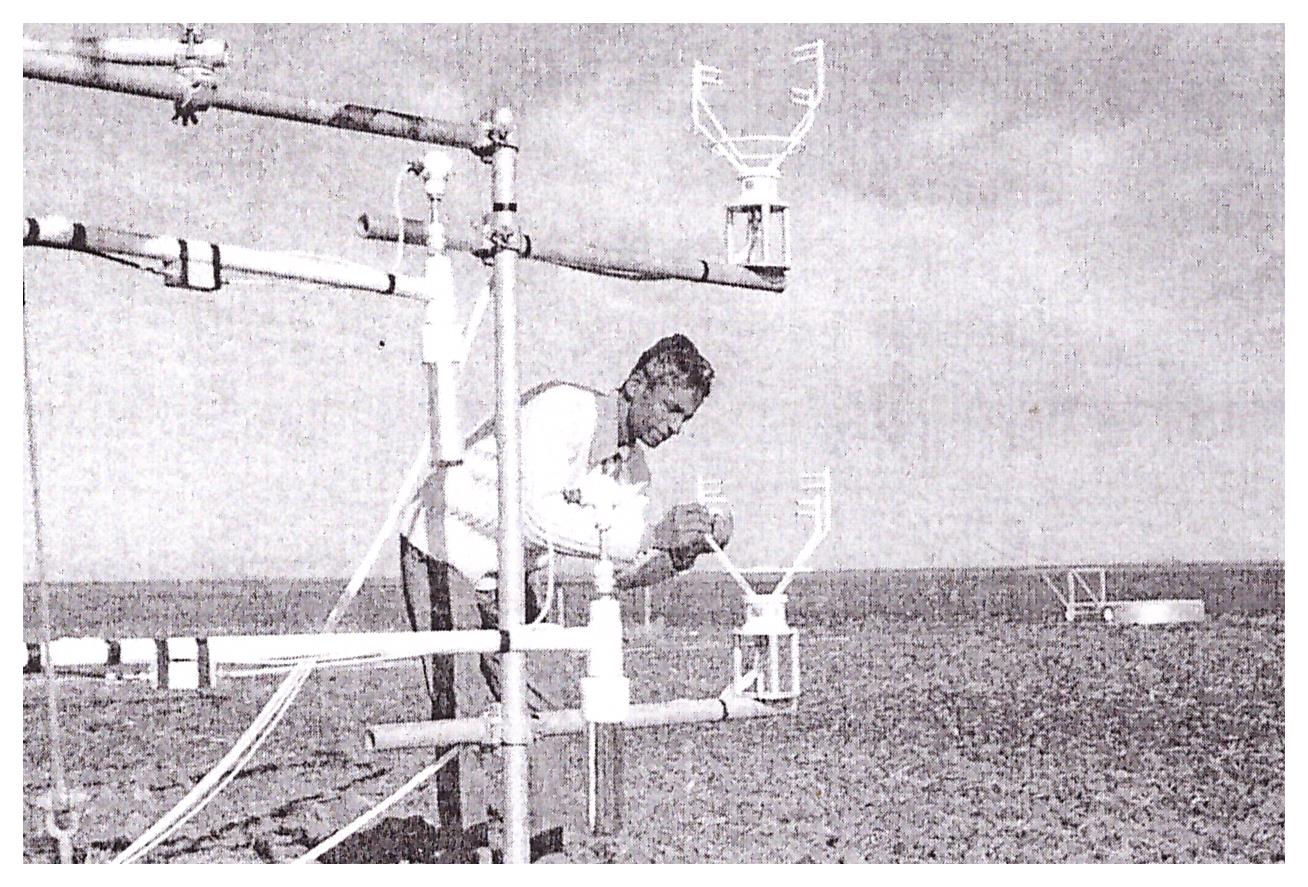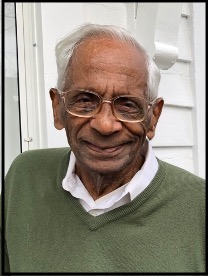Jagadish Chandran Kaimal
1930 – 2021
 |
 |
 |
Jagadish Chandran Kaimal, atmospheric physicist, known for his important contributions to the study of turbulence in the Earth’s boundary layer, died peacefully of natural causes at his home in Hamilton, New York on January 25th, 2021. He was 90 years old.
Chandran was born in 1930 in Kuala Lumpur, Malaysia (then Malaya), to Indian parents, Narayana Kaimal and Ambujakshi Amma. His father was a research botanist at the Rubber Research Institute (RRI) of Malaya. Chandran spent the World War II years with his mother and sister in India at the home of his mother’s extended family in Parur, Kerala, while his father remained at RRI. After the war, his father returned to India to head India’s rubber research and production efforts from 1950 to 1960; he was Chandran’s personal and professional model. Chandran earned his B.Sc. in Physics and Mathematics at Banaras Hindu University in 1952 and came to the University of Washington in Seattle in 1954, where he met his wife Lorraine Augusta and married in 1957. He received his Ph.D. in Meteorology and Electrical Engineering at UW in 1961.
As a graduate student Chandran became interested in finding ways to measure wind and temperature fluctuations accurately in order to get better insight into laws governing turbulent flow near the ground. There was then a sense of urgency about this because of the possible contamination of populated areas from accidents at emerging nuclear facilities and rocket launch sites, and no means to predict it’s spread. Attempts to use the sonic approach to measure the fluctuations were failing. However, in his Ph.D. dissertation Chandran was able to build and field test a working sonic anemometer-thermometer. Joost Businger was his advisor and mentor in this effort.
In 1961 Chandran joined the Air Force Cambridge Research Laboratory (AFCRL) in Bedford, Mass. This laboratory had been active for nearly a decade in the search for turbulent transport equations. Chandran led the effort to further improve their sonic approach making use of emerging computer technology to acquire, process and record the data. This enabled him and his colleagues to conduct their landmark Kansas ‘68 Experiment, which provided them the fast-response (10 Hz) wind and temperature fluctuation measurements they needed. They made measurements at three levels on a 100-ft tower over extremely flat terrain in southwestern Kansas. With that data scientists were finally able to derive the turbulent surface-layer relationships they sought. For his work he was awarded an honor for “Unique and Distinguished Contributions to the Research and Development Program of the United States Air Force” in 1969.
Their next major challenge at AFCRL was to extend the understanding of the flow structure to the top of the boundary layer, roughly 5000 ft. on a clear day, where the rising air begins its slow downward return flow. The Minnesota ‘73 Experiment accomplished this with wind and temperature sensor probes packaged to hang from the tethering cables of a large barrage balloon. Developed by the British Meteorological Office, these packages were launched and operated by Christopher Readings, of their Meteorological Research unit, over the flat plains of northwestern Minnesota over several days. This joint effort provided useful information on the evolution and decay of the whole boundary layer as it responded to the daily heating of the ground by the sun.
In 1975 Chandran and three colleagues, Duane Haugen, John Wyngaard and Jim Newman, moved from AFCRL to Boulder, Colorado, to join NOAA’s Wave Propagation Laboratory (WPL). They were able to bring with them their entire inventory of sensors and the Mobile Micrometeorological Observing System. This move sped up WPL’s plans to build an observing facility with a 1000-ft tower to test and intercompare the remote sensors (radars, lidars and sodars) they were developing to monitor the lower atmosphere. By 1978 the new Boulder Atmospheric Observatory (BOA) was built and ready for operation with eight levels of sonic and other sensors in continuous operation. From then until the mid-1990’s it was the site of numerous intercomparison experiments and turbulence structure studies by scientists from many countries. In 1980 the BAO received a Unit Citation for “Outstanding Individual and Collective Contributions in Furthering NOAA’s Mission”.
Chandan directed the BAO operation until 1982 when he moved to head the Atmospheric Studies Program at WPL. He devoted most of his final year at the Laboratory working with Australian scientist John Finnigan to pull together a book, “Atmospheric Boundary Layer Flows”, published by Oxford University Press in 1994, a fitting culmination of three decades of work and more than 70 papers in journals and conference proceedings. Chandran never lost his interest in sonic anemometry. Over the years he enjoyed his collaboration and discussions of various sonic configurations used at the BAO with Herbert Zimmerman of Applied Technologies in Longmont, Colorado, which made the instruments.
In 1992 Chandran retired at the age 61 and moved to Hamilton, New York, with his wife, Lorraine, to live near their eldest child Padma Kaimal and her family. Padma and her husband, Andrew Rotter, teach at Colgate University; they appreciated the help that grandparents offered to the family with two young children. Life in a small university town suited Chandran and Lorraine very well. Their other two children, Narayan and Maya, live in Massachusetts and New York.
Chandran is survived by Lorraine, Padma, Narayan and Maya and their spouses, six grandchildren and one great-grandchild. His colleagues will remember him for his agile, inventive mind, and his many successful collaborations.
Donations may be made in Chandran’s name to Doctors Without Borders.



